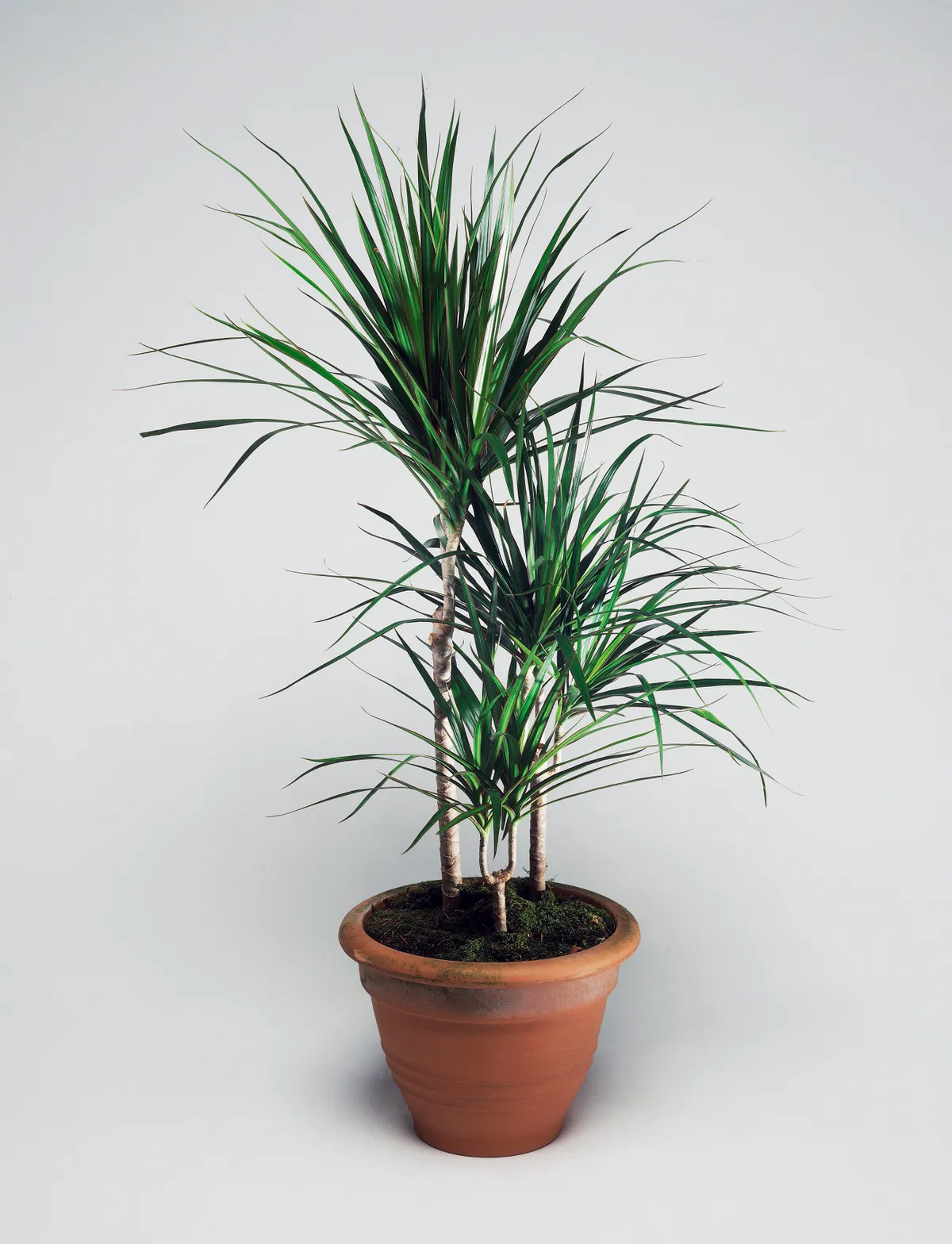Dracaena, the dragon plant, sits in the asparagus family, Asparagaceae. The genus comprises around 189 species mainly from tropical and subtropical African regions, with exceptions from Madagascar, Asia, northern Australia and parts of South America.
Here's how to look after dracaena
The dragon plant has strappy foliage and, unusually for a strap-leafed plant, elegant, woody stems that vary in size, which makes it particularly suitable for tight spots. If anyone asks me for advice on choosing a houseplant, I tend to point them towards the dragon plant or Dracaena genus, and in particular Dracaena marginata. It is a fantastic beginner plant for several reasons.
Dragon plants: everything you need to know
Why dragon plants are easy to maintain
They are very thin
Dragon plants manage to fill a narrower spaces by staying incredibly slim. The stem is slender and graceful as it grows up and is complemented by a canopy of long, thin, deep-green leaves. An evergreen, tropical shrub, the ribbon-like foliage can grow up to 40cm and has a reddish tinge to the margins. It nimbly grows, creating a sense of the outdoors in a restricted indoor space.
They are slow growers
Dracaena are slow-growing, so if you want to make a statement, it is worth starting with a larger, more established plant. My Dracaena marginata has grown just 30cm in three years.

Where to buy dragon plants online
The best conditions for a dragon plant
Where
Dracaena benefit from bright, indirect light. If given too much sun, leaves are at risk of scorch. It’s a good idea to grow them in a bathroom or kitchen for humidity.
Watering
Dragon plants prefer underwatering to overwatering, so let the top few centimetres of soil dry out – test with your finger – before watering again.
Compost
I find multipurpose compost unsuitable for indoor plants. It’s heavy, holds on to moisture and takes some time to dry out. A free-draining potting compost, such as John Innes No.2 with added grit, is better suited to most houseplants, including Dracaena, provided you keep an eye on it and water when dry.
Heat
Keep dragon plants at 18-32°C, ensuring the temperature doesn’t drop below 15°C in winter.
Feed
Feed your dragon plant fortnightly in the summer using a balanced liquid feed at half strength.
Propagation
Propagation of Dracaena is straightforward, via tip cuttings. You can propagate tropical flora all year round, but the success rate is higher in spring and summer when there is more light and heat. If your plant has multiple branches, cut any tip of the stem away from the parent plant, roughly 8cm long and above a node. Remove a third of the lower leaves and place in a jar of water on a windowsill. Refresh the water regularly and in a few weeks roots will appear. Pot on into a free-draining soil in a pot that comfortably accommodates the roots. A new shoot will also appear on the parent plant where the cutting has been taken.





